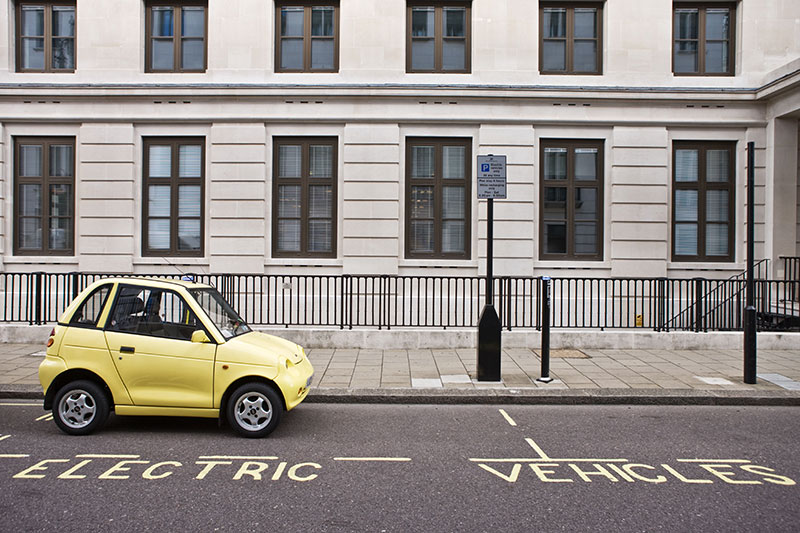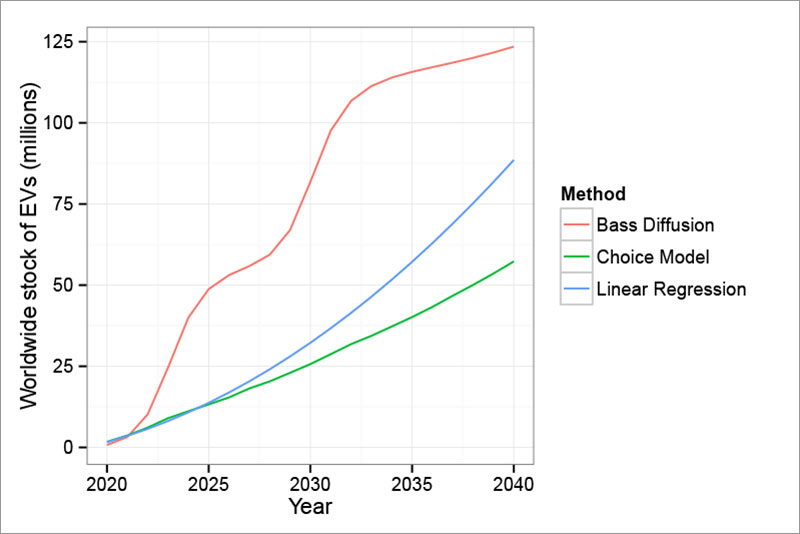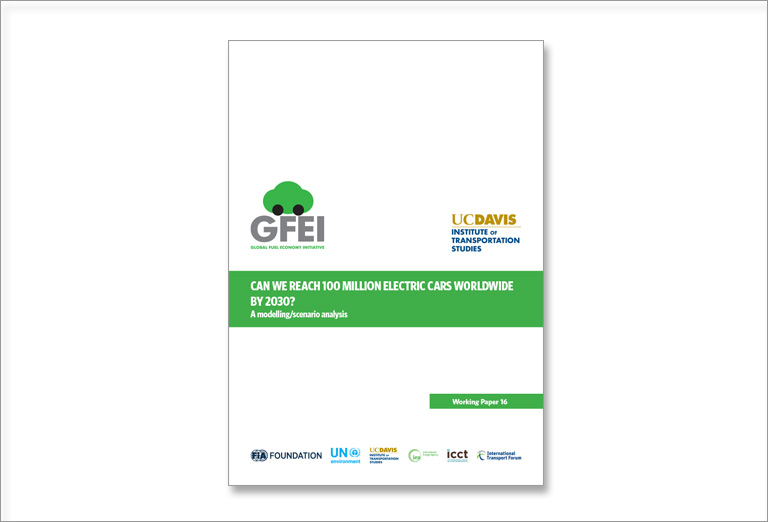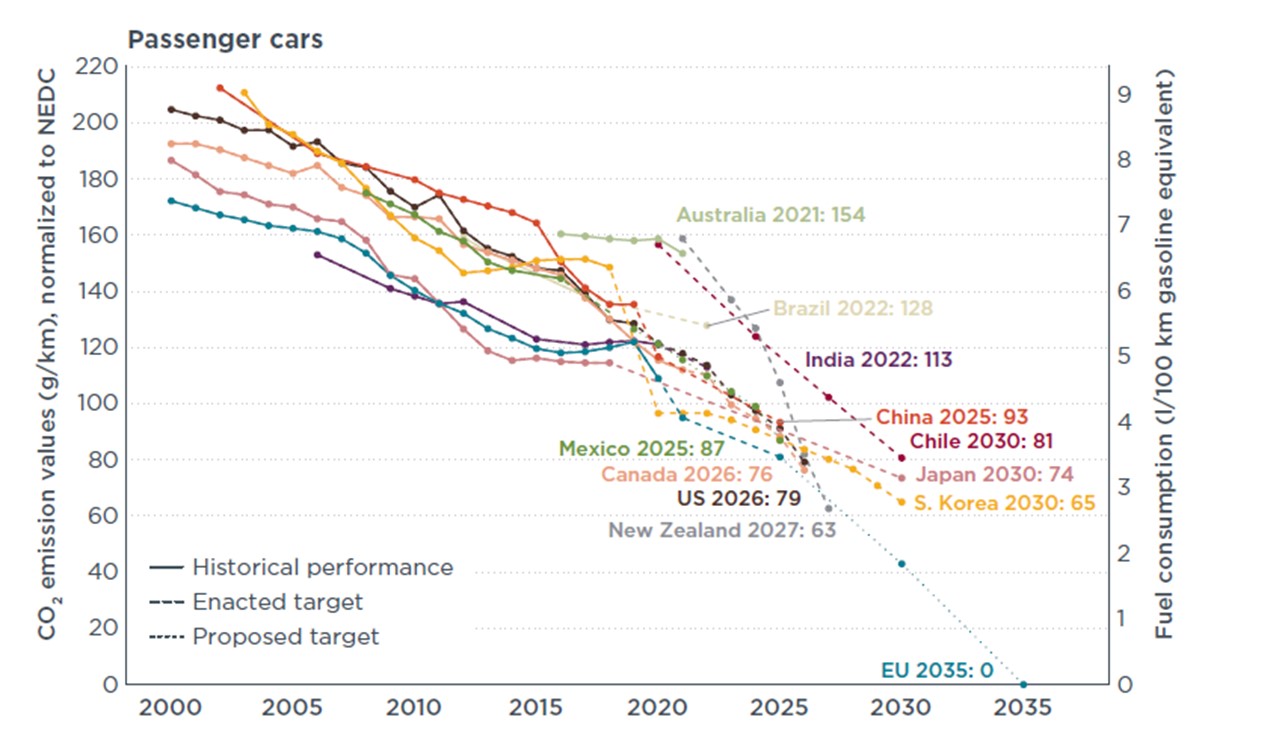Can we reach 100 million plug-in electric vehicles by 2050? A new GFEI report says it is possible, but will be challenging.

In order to achieve very low CO2 emissions by 2050, transportation will need to shift strongly away from fossil fuels.
For light-duty vehicles, the most obvious pathway now is toward electric vehicles. With over 2 million such vehicles on the world’s roads today, this pathway is taking shape and appears promising. However, there will be 2 billion light-duty vehicles on the world’s roads by 2050 so the road is long and will be challenging. By 2030, the UN and others have called for at least 100 million EVs, in order to be “on track”.
This new GFEI report is part 2 of a study of the potential to achieve a particular target of electric and plug-in hybrid vehicle sales worldwide by 2030. The previous report (UC Davis/GFEI, 2015) provided an overview of trends and some of the key considerations in getting to the 100 million target. This report takes a more rigorous approach, considering formalized models and scenario development and projecting key factors to 2030 to gain a sense of whether they suggest that sales of 100 million over that time frame are realistic or even plausible.
We undertake three different model development strategies and compare the projections from these models, using the same dataset and same basic approach to calibrating the models. From that point of view this work provides both a comparison of methodologies and a multi-pronged approach to testing the 100 million hypothesis, perhaps increasing the rigor of the projections (at least allowing for 3 different ways to see if it can be done, and how similar these projections are).
The basic findings of this study include:
- While fewer than 2 percent of vehicles sold in the covered countries in 2015 were BEV or PHEV, there are good prospects for these sales to increase further in the future. Increases are likely due to reductions in battery costs (and thus model retail prices), increases in vehicle driving range, and – very importantly – increases in the numbers of makes/models available, and thus in the choices available to consumers. This includes models likely to appear in market segments where currently they basically don’t exist, such as pickup trucks and minivans.
- However, the prospects for a very rapid increase in sales consistent with a cumulative sales target of 100 million in 2030 are far less bright. Given a rough projection of global car sales of 120 million in that year, this is about 25% of global car/LDV sales. From the actual global sales level in 2015 of about 500,000 worldwide, sales will have to reach about 30 million per year in 2030 to hit the cumulative target (with the area under that 15-year curve representing cumulative sales). This means an annual sales growth rate of over 30% per year (or much higher growth initially and declining over time, is more likely).
- The three approaches used in our projection model all take into account a range of important “drivers”, or explanatory variables. These include vehicle costs, operating costs, driving range, the numbers of makes/models available, and country-specific factors. We find that assuming strong improvements in all these areas over the next 15 years can increase the demand for vehicles dramatically, but none of our models/scenarios hits the 100 million target.
- In particular, our projections using the models includes an assumption that the cost of vehicles drops steadily to 2030 and beyond, which could relate either to reduced vehicle production costs or policies that cut the retail prices (such as subsidies). This change and a steady increase in the numbers of vehicle makes and models available across market classes and across countries are the two main drivers of increased BEV/PHEV sales into the future.
Overall while it appears possible to reach the 100 million target, it will be challenging and strong policies will be needed, that help make EVs affordable, increase the numbers of makes/models offered, and increase the awareness of and interest by consumers in purchasing these vehicles. In the 2030 time frame, fuel economy improvements will save much more CO2 and could actually help pave the way for EVs through policies that encourage them as part of meeting fuel economy standards, and perhaps through “feebate” type policies that use taxes on the least efficient cars to help incentivize EVs, along with highly efficient ICE vehicles such as hybrids. The fuel savings from highly efficient ICEs could also help, with higher fuel taxes helping to pay for EV introduction, without raising the fuel cost to consumers (since their costs will go down with the increased efficiency of ICEs).
In any case strong policies will no doubt be needed to reach the 100 million EV target in 2030, and beyond up toward 2 billion by 2050.










